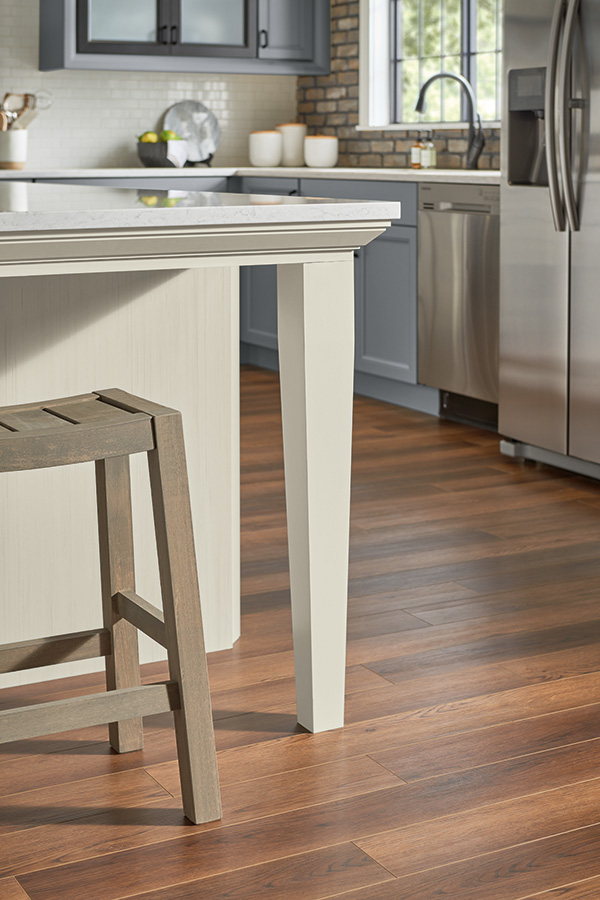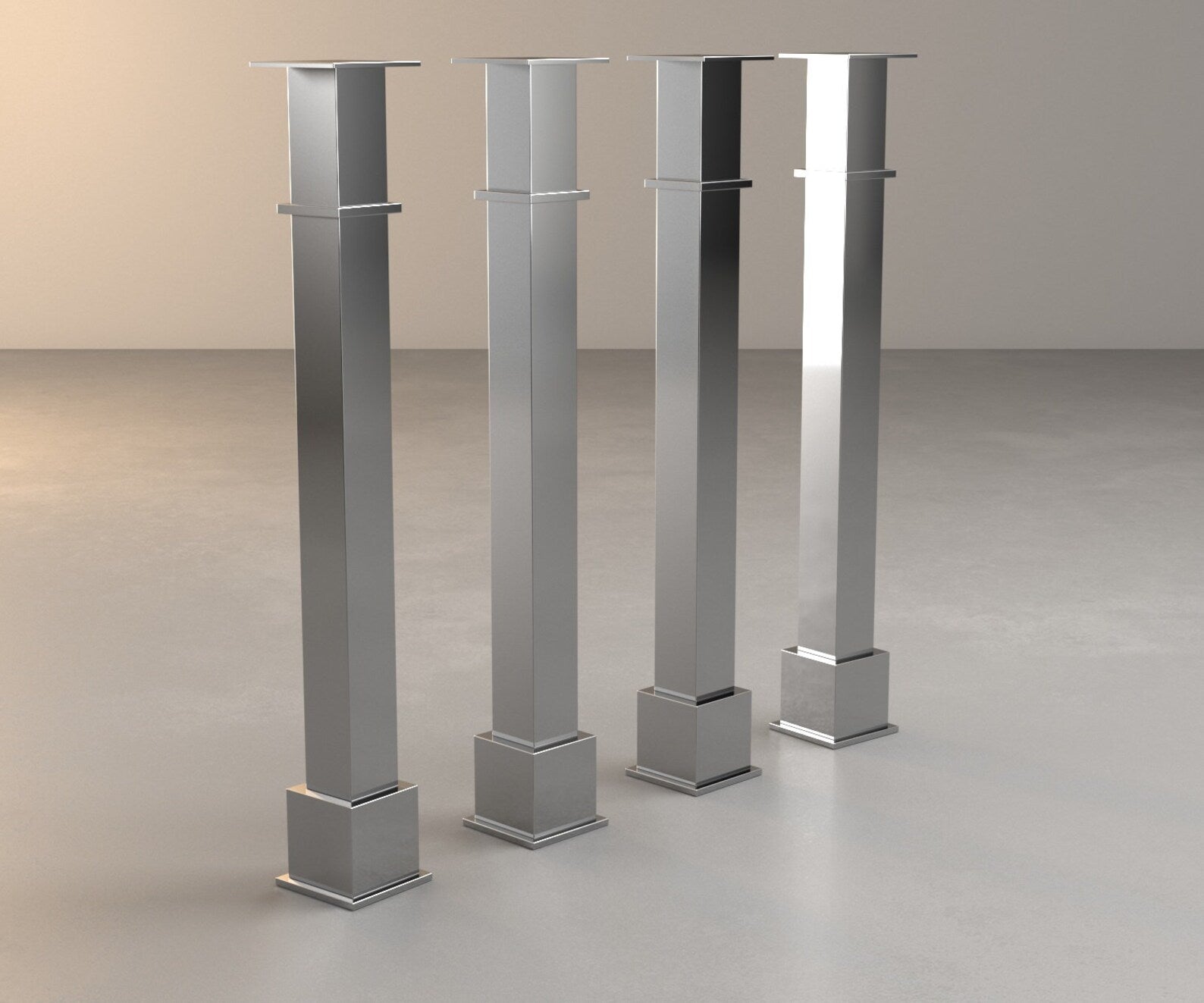Checking Out the Crucial Features of a Kitchen Island Leg for Your Culinary Space
The cooking area island offers as a central center in any kind of cooking room, and the selection of leg style is pivotal in enhancing both its capability and visual allure. Understanding the vital features of cooking area island legs-- including product alternatives, layout styles, and stability aspects-- can dramatically impact the overall experience within the kitchen. As we discover these components, we will certainly uncover exactly how thoughtful modification and devices can boost your kitchen area island from a plain utility to a striking focal point. What specific factors to consider should be focused on to accomplish this equilibrium?
Value of Kitchen Island Legs
Kitchen area island legs play a crucial duty in both the capability and aesthetics of a kitchen room. They not just sustain the weight of the island yet additionally enhance the overall style, adding to the kitchen's aesthetic charm. The choice of legs can dictate the design of the kitchen area, be it modern-day, conventional, or rustic.
Functionally, durable and effectively designed legs guarantee security, enabling the secure use of the island for various jobs such as food preparation, dining, or enjoyable. Strong legs protect against tottering and moving, giving a trusted surface area for day-to-day activities.
Additionally, the elevation and placement of the legs can influence the comfort degree for those seated at the island. A well-considered elevation can fit bar stools or chairs, promoting an inviting environment for events.
In addition to these sensible factors to consider, cooking area island legs can function as a centerpiece in the space (kitchen island leg). Decorative or distinctly designed legs can boost the style aesthetic, making the island a centerpiece. Thus, selecting the appropriate kitchen area island legs is crucial for stabilizing type and function in any kind of culinary space
Material Options for Legs
Picking the proper material for cooking area island legs significantly impacts both longevity and style. Typical material options include timber, stone, and metal, each offering distinct benefits.
Wood is a preferred selection as a result of its heat and adaptability. It can be conveniently tailored to match numerous style styles, from rustic to modern. Hardwoods like oak and maple offer outstanding stamina and longevity, while softer timbers can be extra at risk to put on and tear.
Metal legs are favored for their smooth, contemporary visual. kitchen island leg. Stainless steel and light weight aluminum are not only durable but additionally resistant to corrosion and deterioration, making them perfect for cooking area environments. They can produce a commercial look and are frequently readily available in various surfaces to enhance other kitchen aspects
Rock legs, such as granite or marble, include an element of deluxe and stability. While larger than various other materials, they use extraordinary resilience and can endure substantial weight. Nonetheless, they might need added assistance to ensure proper equilibrium.
Ultimately, the selection of product should align with both practical requirements and the overall design vision of the kitchen area, making certain that the island legs enhance both utility and aesthetic appeals.
Style Designs to Take Into Consideration
What layout styles should be taken into consideration when selecting legs for a cooking area island? The choice of leg design significantly influences the total visual of your culinary space. For a modern cooking area, minimalistic and streamlined great site leg styles, such as stainless steel get more or geometric shapes, can enhance the modern-day appeal, offering a tidy and clean look.
In contrast, conventional kitchens gain from classic styles such as turned or sculpted wood legs, which add warmth and character. These options typically include complex information that match classic home furnishings. For a rustic ambiance, consider legs made from recovered timber or wrought iron, which bring a natural, natural quality to the area.
If you lean in the direction of an industrial motif, robust metal legs with a troubled finish may be excellent, supplying an edgy yet innovative touch. In addition, farmhouse style kitchen areas can include beefy legs that evoke a feeling of durability and homeliness.

Elevation and Stability Elements
The height and stability of a kitchen island are critical aspects that straight influence its performance and customer experience. An excellent kitchen area island leg should give sufficient height to suit a selection of jobs, from food prep work to informal dining. Usually, cooking area islands separate 36 to 42 inches high, aligning with common counter and bar heights. This range ensures comfort for customers while executing different tasks, therefore improving the total usability of the room.
Stability is equally important, particularly as kitchen islands frequently act as centerpieces in culinary settings. A secure leg design minimizes wobbling and changing, which can cause mishaps or discomfort during usage. Products such as strong wood, metal, or a mix thereof are generally used to attain the needed strength. Additionally, the leg's attachment to the island's base must be secure, ensuring durability and durability against the damage of everyday use.
Personalization and Devices
Personalization alternatives and accessories for kitchen area island legs can significantly improve both the visual charm and capability of the area. Homeowners can choose from a variety of materials, consisting of metal, rock, and wood, enabling for smooth integration with existing kitchen area decor. The selection of surface-- be it an all-natural stain, repaint, or powder coating-- additional individualizes the look, making sure that the island enhances the overall style motif.
Along with product and surface, homeowners may also explore the unification of devices such as ornamental brackets, adjustable This Site feet, or integrated shelving. Brackets can use added support while adding to a rustic or contemporary visual. Flexible feet are particularly useful for irregular floor covering, making certain the island remains stable and level, which is crucial for both security and functionality.

Final Thought
In final thought, kitchen area island legs offer an essential duty in giving security and boosting the total aesthetic of the culinary space. Personalization choices and accessories can raise the cooking area island, making it an unique focal point within the home.
The kitchen island serves as a main center in any type of culinary room, and the selection of leg style is essential in boosting both its capability and aesthetic charm. Understanding the necessary features of kitchen island legs-- consisting of product options, layout styles, and security elements-- can considerably influence the general experience within the kitchen.Kitchen island legs play a crucial duty in both the performance and looks of a kitchen area space.What style styles should be considered when picking legs for a kitchen area island?In conclusion, cooking area island legs serve an essential function in providing security and enhancing the total visual of the culinary area.
Comments on “Update Your Kitchen with Classy Kitchen Island Leg Solutions”